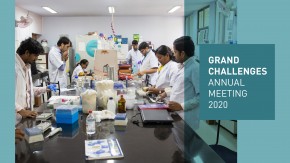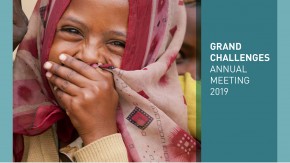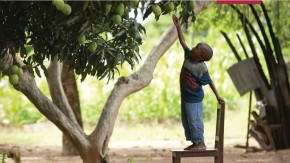
Last year, we announced the next phase of Grand Challenges by launching three new challenges with associated requests for proposals:
- All Children Thriving: Creating and Measuring Integrated Solutions for Healthy Birth, Growth, and Development (also launched in parallel through the country-specific partnerships Grand Challenges Brazil, Grand Challenges India, and Grand Challenges South Africa)
- Putting Women and Girls at the Center of Development
- Creating New Interventions for Global Health
As we and our partners hoped, these new grant opportunities stimulated a tremendous amount of interest, and we and our partners received over 3,600 letters of inquiry (we will publish a companion blog that will share some of observations with regard who is applying to Grand Challenges). This week we are completing the first phase of the review and will be inviting more than 160 teams to submit full-length proposals that will be considered for funding by either the Bill & Melinda Gates Foundation or a Grand Challenges partnership that includes the Foundation. The reviewers were very excited by the quality of the proposals, the diversity of the ideas, and the diversity of organizations applying.
In a previous blog, we discussed How We Measure the Value of Grand Challenges. First and foremost we use Grand Challenges to source and nurture new ideas that can lead to impact in the Foundation's strategic areas of focus in global health and development. We look for innovative approaches that lead to new solutions, including innovation in science and technology as well as social and business innovation, and we seek solutions whose impact can be demonstrated in one setting, while having the potential to expand in scale and relevance. We would like to share a bit about the process we use to select awards, which is also at the core of the Grand Challenges value proposition. Grand Challenges provides opportunities for us to engage and learn from applicants, grantees, and funding partners, making our work smarter and building a research and funding network that creates new opportunities and resources for innovators to advance their projects.
A question that will come to many people's mind is how we get from over 3,600 applications to 160 priority proposals. Our first step is to ask three questions:
- Is the application responsive to the call? Applications can be determined to be non-responsive either because the proposed work is clearly outside the scope of the challenge or the applying institution does not meet eligibility requirements.
- Is the proposed work on strategy for the Foundation - or for shared strategic priorities in the case of funding partnerships? Although our areas of strategic interest are described on our website, these areas evolve in response to results of current investments and to new information, including new directions suggested by novel approaches in applications. Most applications are declined based on this 2nd question.
- If the proposed work were to be successful, would it be important and impactful? Our review process diverges from more typical scientific reviews in that we place the highest priority on potential impact as opposed to scientific novelty.
This review step is an initial filter, and typically less than half of the submitted proposals move forward. We also use this opportunity to categorize the ideas submitted, which informs the next step in the review process – engaging the appropriate experts within the Foundation – as well as informing the direction of future work in the Foundation, including the design of new challenges.
In the second step of the review, each proposal is evaluated by multiple reviewers based on the following criteria:
- Is the work innovative relative to existing approaches and more specifically, relative to the existing portfolio of work we are already funding?
- Is the work scientifically feasible and is the plan to demonstrate the validity of the idea sound?
- Is the team likely to be able to execute the project and do they bring any unique resources or collaborations that are particularly valuable for achieving the proposed goal?
- Is the budget and timeline reasonable relative to the project complexity, risk, and potential impact?
We bring together experts across the Foundation at this stage, and we are very receptive to a champion-based review permitting a single passionate reviewer to advocate that an applicant be given the opportunity to submit a full-length proposal against a consensus of reviewers who would decline the application. In these discussions, we seek to balance picking the best individual proposals based on the criteria above versus building a portfolio of projects with complementary approaches. From this perspective, a key outcome of the review discussion is a set of suggestions for modifying the project sent to teams whose application is moving forward. We appreciate that detailed feedback for declined applications would be valuable, but due to the very high volume of applicants, we are not able to provide comments for individual applicants. Subsequently, the full-length proposals will be reviewed by experts within and outside the foundation, and typically a half or a quarter of them will ultimately be funded. We fully appreciate that this is an imperfect process carrying the certainty that meritorious proposals will be declined at every stage.
With a decade of Grand Challenges work behind us, we are increasingly confident in the value of this approach and increasingly committed to ensuring that we are always providing a set of grant opportunities to engage the world's most creative minds. The Grand Challenges and partner teams would like to thank all those who have submitted an application through the Grand Challenges family of initiatives. Great ideas come from everywhere, they can change the world for the better, and Grand Challenges can be part of discovering and nurturing these ideas for a better world.



